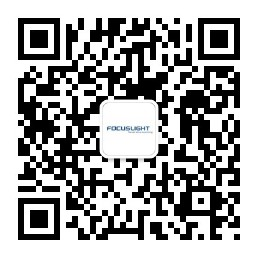
Presentation Information
Moscone South, Room 206 (Level 2), Moscone Center, San Francisco, California, USA
Jan 27th

Speaker: Hao Zhang, the R&D manager for the development of LiDAR transmitter module at Focuslight. His main research areas include VCSEL, LiDAR transmitter modules, and laser scanning devices, such as MEMS and metalenses.
15:00-15:20(PST)
High performance EEL line beam module based on GS packaging for LiDAR applications

Abstract: LiDAR based on line-beam is increasingly becoming the mainstream solution for laser radar because of its simple architecture, high reliability, regular point cloud, and smaller size. We report on an EEL chip-based line beam module packaged with GS technology. Compared to conventional COB packaging, the peak power is increased by 25%, while the junction temperature decreases by approximately 10.4°C. The module shows excellent optical performance including small SMILE resulting from the symmetrical structure and light emission from the center of a PCB.
Jan 28th

Speaker: Dr. Chun He, Chief Scientist at Focuslight.
Sole or co-inventors of 21 US patents, Inventors of 25 international patents.
Main contributors of 50 peer-reviewed publications.
Over 50 invited and contributed talks in international and national symposiums and conferences.
10:40-11:10(PST)
A novel high gain, ASE suppressed, and highly efficient fiber amplifier (Invited Paper)

Abstract: The amplifier achieved a record gain of 47dB, meanwhile the ASE has been effectively suppressed to -40 dB below the laser signal. It shows wide dynamic range and can be operated with input as low as 10pW. Experiments have been performed by applying this novel design in Er-doped fiber amplifies at 1.5um and Yb-doped amplifier at 1.0um wavelength ranges, with running conditions of cw, directly driven 2ns laser pulses, model-locked 10ps fiber lasers, and mode-locked, dispersion-compensated 100fs soliton fiber lasers. The amplifiers especially outperform the traditional fiber amplifiers when operating at lower repetition rates where the ASEs are strongly competing with stimulated emissions.
14:30-14:50(PST)
High power diode laser development using advanced bonding technology and innovative structure design

Abstract: High power diode lasers, operating in long pulse width mode, require high reliability in the medical aesthetic application. In this study, we have developed a sophisticated high-performance diode laser device. For diode laser (LD) chips with a 1.5 mm cavity length at a wavelength of 808 nm, the thermal resistance is approximately 0.3 K/W. The thermal rollover power in continuous mode reaches 268 W, which is 40% higher than conventional MCCs with direct chip bonding. In quasi-continuous mode with 20 ms at 10 Hz, the maximum power reaches 345 W, marking a 15% enhancement compared to MCCs with direct chip bonding.
16:00-16:20(PST)
High-power InP diode lasers operating under large-pulse condition with high reliability

Abstract: For semiconductor laser bars based on InP substrate, which has different physical properties from that of GaAs, it is necessary to develop packaging technologies with low thermal resistance and low packaging stress to achieve high reliability and high-power performance. We report here InP-based 1470 nm laser bar devices with passively conduction-cooled heatsink that feature low bonding stress and low thermal resistance, made through an innovative packaging process. For laser diode (LD) chips with a 2 mm cavity length, the thermal resistance of the devices is about 0.27°C/W, and the thermal rollover power can reach 60 W at 150 A under continuous wave (CW) conditions. Moreover, these LD devices demonstrate high reliability under hard-pulse operating conditions.
We look forward to exchanging ideas and sharing experiences with industry experts and peers, while exploring the limitless possibilities of future technologies. See you there!











 Return
Return













